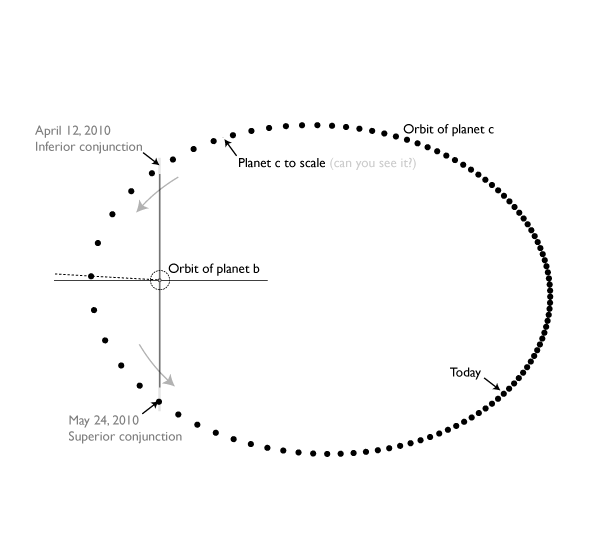
In reviewing grant proposals and observing proposals that seek to study extrasolar planets, one notices that two cliches turn up with alarm-clock regularity. Number one is Rosetta Stone, as in this or that planetary system is a Rosetta Stone that will enable astronomers to obtain a better understanding of the formation and evolution of planetary systems. Number two is ideal laboratory, as in this or that system is an ideal laboratory for studying the processes that guide the formation and evolution of planetary systems.
A terse unsolicited e-mail from Gaspar Bakos always means that a big discovery is in the offing, and today was no exception:
Hello Greg,
You may like this.
http://xxx.lanl.gov/abs/0907.3525Best wishes
Gaspar
Indeed! HAT-P-13b and c constitute a really exciting discovery. For a number of reasons, this system is a Rosetta Stone among extrasolar planets, and in large part, this is because the system is an ideal laboratory for studying processes such as tidal dissipation and orbital evolution.
HAT-P-13 harbors the first transiting planet that has a well-characterized companion planet. In this case, the outer companion has a P=428 day orbit, an Msin(i) of 15 Jupiter masses, and an eccentricity, e=0.7. In the following diagram, the orbits and the star are shown to scale; the small filled circles that delineate the outer orbit show the position of the outer planet at 4.28 day intervals.

Illustrator-editable PDF of the above
Of obvious interest is the question of whether planet c can be observed in transit. The a-priori probability is seemingly enhanced by the transit of the inner planet. (Give that one to the good Reverend Bayes). The next opporunity rolls around in April 2010, with the opportunity to observe secondary transit following a bit more than two months later.
It’ll be quite something if planet “c” does transit. A sense of the wide open spaces in the system can be obtained by plotting the star and the two planets to scale with their respective separations at the moment of inferior conjunction. Given the width restriction of the blog post format, one needs to present this plot vertically:

There’s a lot more to say about the HAT-P-13 system — so much in fact, that Peter Bodenheimer, Konstantin Batygin and I are furiously writing an ApJ letter. Should have it out the door in a day or so, with a roundup to follow here on oklo.org immediately thereafter…

Eric Ford sent me the same paper earlier today. I am still fooling around with his code for modeling planetary systems (using Differential Evolution MCMC methods), but we might expand the code to include transits.
I guess this system provides yet another datapoint against the idea that the deuterium fusion limit should be used as the dividing line between planets and brown dwarfs.
Greg,
Your NYTimes interview overestimates the age of meteor crater by three orders of magnitude:
http://www.nytimes.com/2009/07/26/weekinreview/26overbye.html
Hi Lab Lemming,
Thanks for the comment — the article is a bit unclear in the wording. I wasn’t referring to the ~50Kyr age of the crater, but rather to the likely age of the asteroid collision involving an M-type asteroid that produced the nickel-iron fragment whose orbit later diffused into the inner solar system and produced the Barringer impact.
best,
Greg